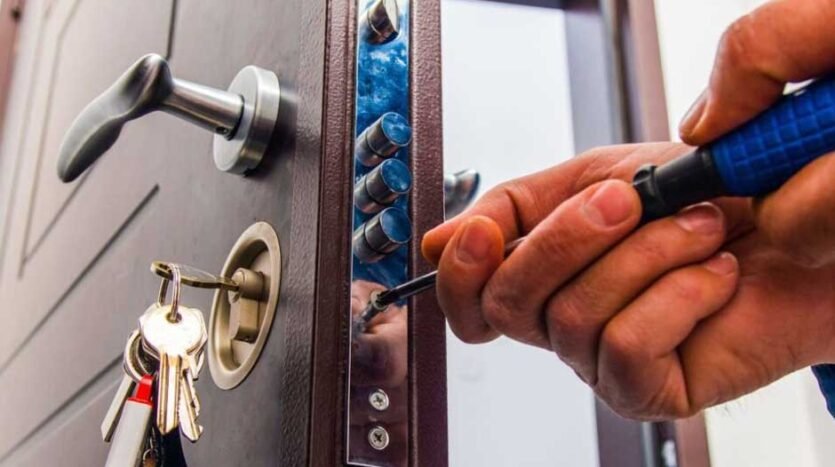The Small Fixes That Can Make Your Home a Lot Safer
When people think about making their homes safer, they usually think about alarms, cameras, or maybe even new locks. Those are all good, but they’re not the only things that matter. Some of the most important safety upgrades are the ones that don’t seem all that exciting—things that protect the house itself, not just what’s inside it.
Upgrades that help during storms, stop break-ins, or keep small problems from turning into big ones can make a huge difference. And the best part? These changes aren’t always huge projects. Some are simple fixes that people often overlook.
Windows That Can Handle a Lot More
One of the biggest weak points in any house is the windows. They let in light, fresh air, and views—but during a storm, they can also let in wind, water, or flying debris if they’re not strong enough.
That’s why some people look into getting hurricane-rated windows, especially in areas where strong storms are common. These windows are built to take hits from high winds and heavy rain without breaking or letting water inside.
Standard glass can shatter fast if something slams into it during a storm. But hurricane-rated windows are made with impact-resistant glass and strong frames that help keep everything sealed up tight. Even if something hits them, they’re designed to stay together instead of sending sharp pieces of glass flying around the room.
Besides storm protection, these windows can also help with soundproofing, insulation, and even blocking UV rays that fade furniture and floors. So they’re not just safer—they make the house more comfortable too.
Doors That Don’t Give In
Old doors can be easy to break open, especially if the frames are weak or the locks are outdated. Replacing a front door with a newer, solid one can make a huge difference in both safety and energy efficiency.
Some newer doors are made from fiberglass or steel, which are harder to damage than old wooden ones. Good locks matter too. Even a basic door gets a lot more secure with a deadbolt and a solid strike plate. For extra safety, reinforcing the door frame can help it stay in place, even if someone tries to force it open.
Storm doors are another option in places where weather gets rough. These go in front of the main door and add an extra layer of protection from wind, rain, and heat.
Securing the Outside
Sometimes, safety problems start outside the house. Trees with weak branches can fall during storms. Loose gutters can rip off and damage the roof or windows. Even things like yard tools or patio furniture can get picked up by strong wind and tossed into the house.
Making sure everything is secure before bad weather hits can prevent a lot of damage. Trimming trees, locking up outdoor items, and checking for loose parts on the roof can go a long way. These don’t take much time, but they help protect the home from weather that gets out of control.
Lighting That Does More Than Shine
Good outdoor lighting isn’t just for looks. It also helps prevent accidents and can even scare off intruders. Lights near doors, walkways, and the driveway make it easier to see where you’re going at night. They also help you spot anything that looks off before getting too close.
Motion-sensor lights are especially useful. They only turn on when someone’s nearby, which saves energy and grabs attention fast if someone’s sneaking around. They’re simple to install and work well with other safety upgrades.
Fixing What’s Already Weak
One of the smartest ways to improve home safety is by checking for anything that’s already broken or worn out. Cracked windows, loose stairs, wobbly railings, and old wiring might not seem urgent—but they can lead to accidents or bigger damage if they’re not fixed.
Even leaks can become safety problems. Water can cause mold or weaken parts of the home if it’s not cleaned up properly. Catching these problems early means they’re easier and cheaper to fix.
Taking care of the basics might not feel exciting, but it keeps the home strong and safe long-term.
Smoke and Carbon Monoxide Detectors
Everyone knows they should have smoke detectors, but not everyone checks them often. These devices only help if they work. Testing them once a month and changing the batteries at least once a year can save lives.
Carbon monoxide detectors are just as important. Carbon monoxide is a gas you can’t see or smell, and it can be deadly if it builds up in a house. These detectors make sure that if something goes wrong with a heater or stove, people are warned before it’s too late.
Why It All Adds Up
Doing one small fix might not seem like much on its own. But when a few smart changes are made, the whole house becomes a lot safer. Impact-resistant windows, stronger doors, working alarms, and even basic repairs all play a part in protecting the people inside.
It’s not about spending tons of money or turning the house into a fortress. It’s about paying attention to what matters and making upgrades that actually help when something goes wrong.
Keep Safety Simple
Making a home safer doesn’t have to mean big projects or expensive gear. A few smart changes—like better windows, upgraded doors, secure outdoor spaces, and working detectors—can make a big difference without completely changing the house.
It’s easy to miss the small things until something bad happens. But by fixing them early, those little upgrades can end up doing a lot when it really counts. That’s what makes them worth doing now—not later.


